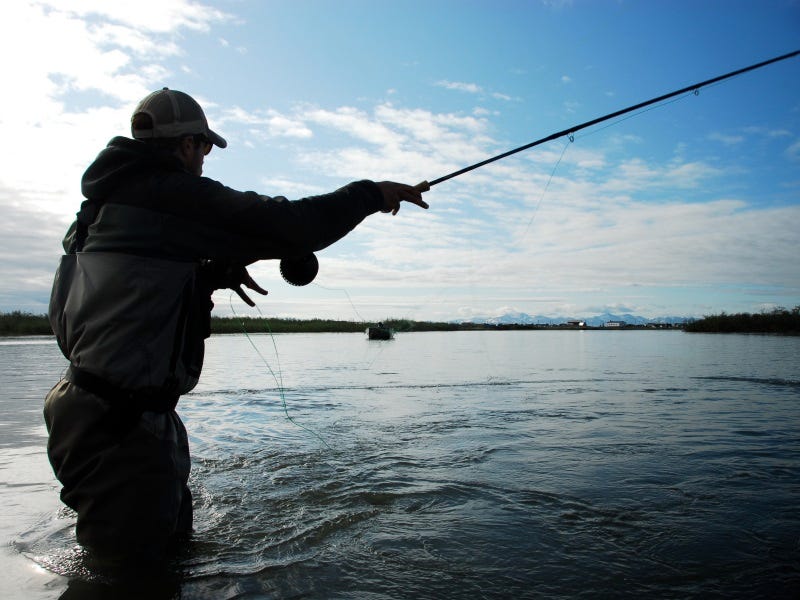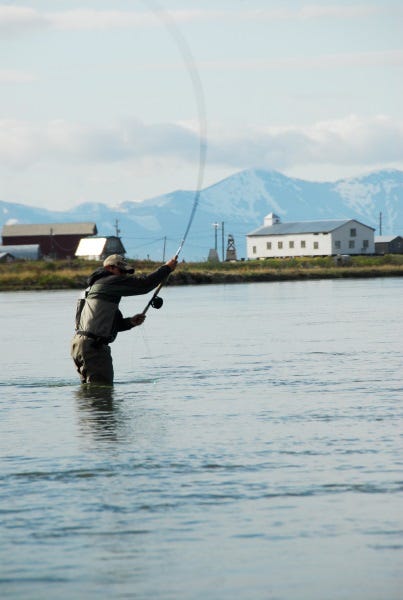Spey Rod Ferrules—To Tape or Not To Tape


Recently, someone posed a question to me: “Do you tape your spey rod ferrules?” My answer is “no.” That said, I have guided anglers who insisted on taking the time to tape each ferrule after assembling their rods. For some, it’s almost a ritual and can’t be rushed. When the taping process took place, I was usually fidgeting and taking deep breaths and trying to remain calm... while good water rolled by . . . unswung, of course.
The concept of taping spey rods has some merit because spey casting generates lots of torque. Depending on the style of casting, that torque can come from differing angles. Through the course of a fishing session, sections sometimes loosen at the ferrule connections. A loose section can lead to damage, cracking or even full breakage.
To best address this issue I contacted a number of industry pros and asked them whether they tape ferrules or not, and why. Here’s what they said.
Stuart Foxall—Loop
I don’t think Loop has any recommendations on taping, but I can give you my ideas on it. I personally think it’s a bad thing! I much prefer to use candle wax. It keeps the rod secure and also makes it easier to pull apart. If the rods do stick, you just need to heat it up and the wax warms up and acts like a lubricant.
I’ve seen folks use tape in areas where changes of temperature are evident. Take BC in the fall as an ex-ample. It can be sub-freezing in the morning and get very sunny and warm in the afternoon. This causes the rod to contract in the morning and then expand in the afternoon. This forces the male ferrule outwards and the tape slips with it. Because the tape is covering the ferrule, you can’t see the movement and the separation. Next cast and the rod cracks or smashes at the female ferrule.
Zack Williams—Swing the Fly Magazine
I tape my competition rod and spliced bamboo rod, but never my fishing rods. My comp rod is a 15 foot 10-weight and there’s a lot of torsion and stress on the rod when casting a long belly line. There’s been two occasion when I didn’t tape my ferrules on the comp rods and the tip section came off midway through the cast. Luckily, the rod didn’t break. As for my fishing rods, I twist each section about a half turn, while applying pressure so the ferrules are snug and the guides are lined up with the reel. I also check the sections throughout the day.
Mia Sheppard—Winston
When the ferrules dry out, I will put clear ski wax on them, but this isn’t often. Every couple of years. I think it’s important to store your rod in a case if it’s not going to be used for a few months. Don’t store a rod wet. Dry it out first. Every time I’m putting together a rod, I consciously check and run my fingers down the rod looking for dings, cracks or signs of ferrules drying out. If there is something that would lead to breakage, I can send the rod in before it gets worse.
Brian Silvey—Winston
Once you have used your spey rod for a while, twisting it on and off tends to scratch the surface and the male end gets dry. You’ll notice when it starts squeaking at the ferrules when you are putting your rod together. That is when I would recommend some kind of wax on the male ferrules. If you don’t wax them, they can stick and you won’t be able to get your rod apart. I typically use small tea candles I carry in my gear bag. Rub some wax on the male fer-rules and then wipe the excess off with your hand. This will help keep your spey rod together and make it easier to separate at the end of the day.
Tom Larimer—G Loomis
I don’t tape. Personally, I’ve never actually seen a ferrule blow up because it loosened. On rare occasions, I’ve watched sections come off during the cast. Consequently, I would tell my customers to check their ferrules prior to fishing.
The tape thing came from the era of green heart wood. Anglers used a piece of leather to secure the ferrules together. Somewhere along the progression of materials, that translated to tape. It may have been a product of a time when ferrule fits weren’t as exact as they are today, and materials weren’t as strong.
At G Loomis, we use a laser micrometer to achieve a ferrule fit down to ten thousands of an inch during design. Consequently, wax is not needed. In fact, if too much wax is applied to a ferrule, it can actually have a neg-ative effect on the fit because the diameters are so tight. We recommend that the angler offsets the two pieces being put together at a 90-degree angle and twists the sections into alignment as they push them together.
James Lemon—Rajeff Sports
The only thing I’d recommend is using fingertip (light) pressure to connect the ferrules and then twist with pressure to lock in the ferrules at the alignment dots. Periodically throughout the day of fishing, you’ll want to check the connections of the rod and make sure they are tight. I always do this and haven’t had any problems. When you have new guys whipping their spey rods around, the frequency of checking the ferrule connections should be in-creased.
We do not endorse taping your ferrules. If you’re having difficulty with the sections staying together, a small amount of wax can be applied.
George Cook—Sage
I don’t personally tape them. I’ve learned over 27 years to keep a keen eye out for trouble. Trouble starts with the first visual of a given rod section twisting or being torqued out of original-proper rod alignment. Once sighted , stop casting and take 30 seconds to re-align that “given” section and then go ahead in a proactive manner to check and adjust any other sections. Lunch or walks between runs also afford a great opportunity to re-affirm ferrule position.

Final Thoughts
Under normal fishing conditions, nobody tapes their spey rods. Williams finds tape valuable for a distance casting session with his competition rod, but that’s about it. The main takeaway is to keep an eye on your ferrule connec-tions throughout the day. Adjust as needed. Wax might be beneficial for older rods with dry or scratched ferrule surfaces or when temps swing broadly during an outing. In a pinch, I usually just wipe a little oil or sweat off the side of my nose and rub on the ferrule.
